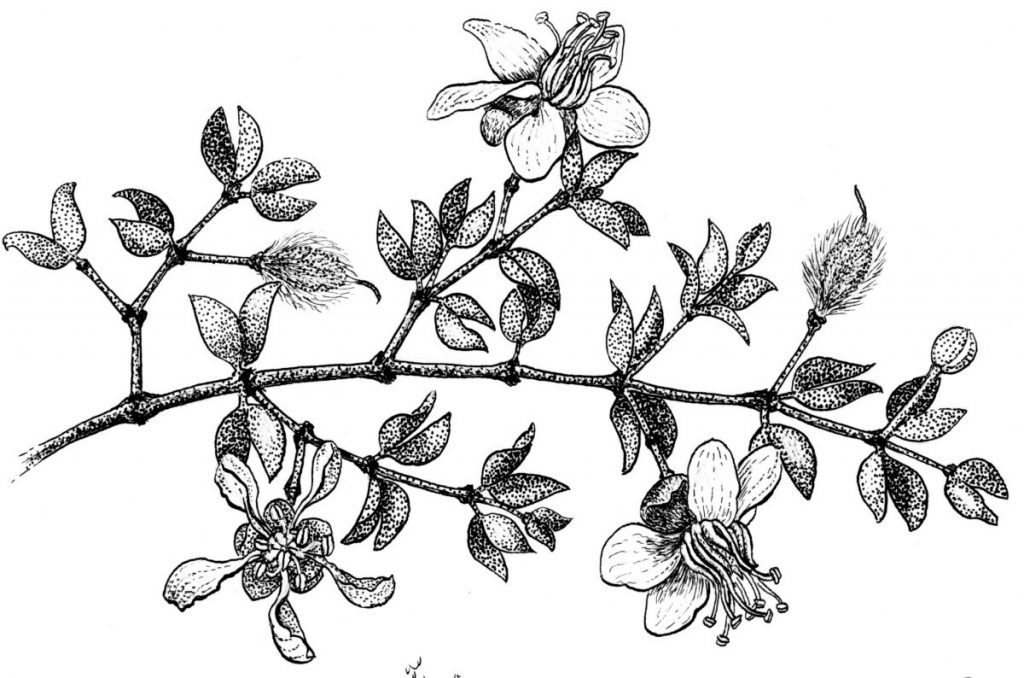
Creosote – The Aroma of Rain
August 21, 2017Creosote Bush aka Greasewood
Larrea tridentata
The wonderful experience of a storm in the desert includes the stark beauty of valleys and mountains, diamond raindrops, intense rainbows, wind and an unforgettable aroma that fills the air after the storm passes causing us to reflect that “the desert smells like rain.” This is the scent of Creosote Bush.
Found throughout the warm North and South American deserts, Larrea is a plant of contradictions — a poisonous plant, although jackrabbits are known to sharpen their teeth on it; and a source of medicine and food for humans. Extracts of the leaves are used to treat sores, but touching the leaves can give some people dermatitis. The flower buds are pickled in Mexico and eaten like capers. Deposits left on stems by lac scale insects (Tachardiella) can be used as glue or a waterproof sealant.
Three non-interbreeding ecotypes of Creosote Bush occur in North America. An ecotype is a regionally or locally adapted form of a species. The Chihuahuan form is upright and vase-shaped, with few leaves near the base. The branches terminate in flat fans of leaves which tend to be fewer in number, but larger than those of the other ecotypes. The other two ecotypes are derived from the Chihuahuan form. The Sonoran Desert creosote bush is upright, but broader than the Chihuahuan and with more branching and leaves low on the plant. The Mohave Desert ecotype is lower, bushier and likely the result of a rare sterile hybrid between the other two ecotypes. The strong genetic barrier between ecotypes suggests that these really should be considered separate species. The problem is in identifying which ecotype/species is being studied since they look so similar.
Creosote is generally found below 4,000 feet elevation, and in the hottest, driest localities. Flowering normally occurs in spring, but may occur almost any time of the year following substantial rainfall. Flowers are yellow with five petals and about ¾” across. The leaves are formed by two branched leaflets, about 3/8” long, which are joined at the base. The leaflets create a natural water drop catcher and aid in leaf uptake of rainfall. The leaves are resinous and emit a distinctive easily recognized smell.
In the landscape, plants may be used as medium shrubs, open screens, or as a clipped hedge and placement in arid or transitional zones is appropriate. The Creosote Bush is also desirable for its scent and colorful blossoms. Plants are sporadically available in nurseries, salvaged or grown from seed. When planting Larrea, it is important to take extreme care not to break the root ball, as this is often fatal to the plant. Cutting the pot, then carefully lifting the plant out and into the hole is recommended. Newly planted creosote bushes should receive sufficient watering for 1-2 years, after which rainfall alone is generally adequate.

